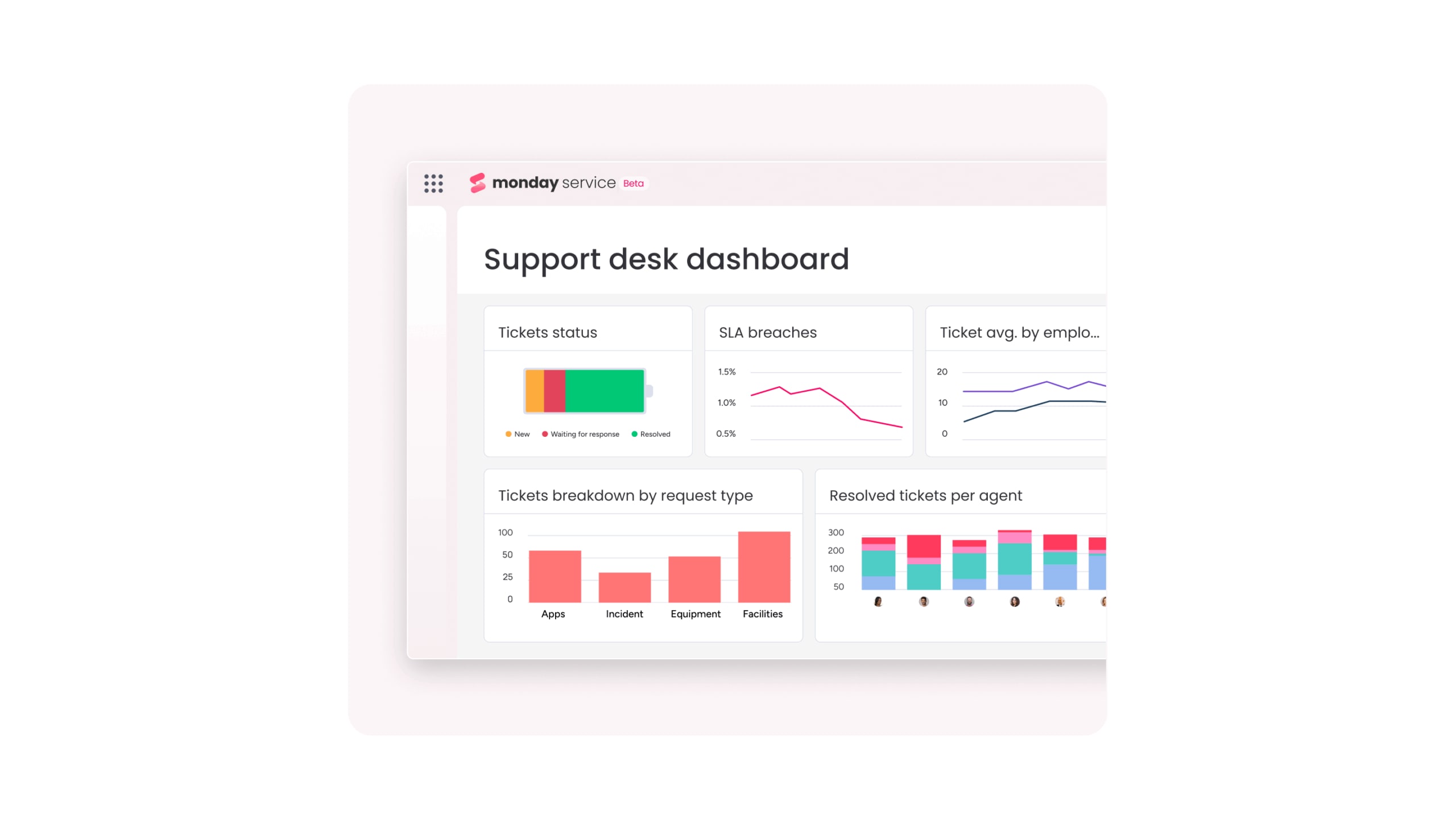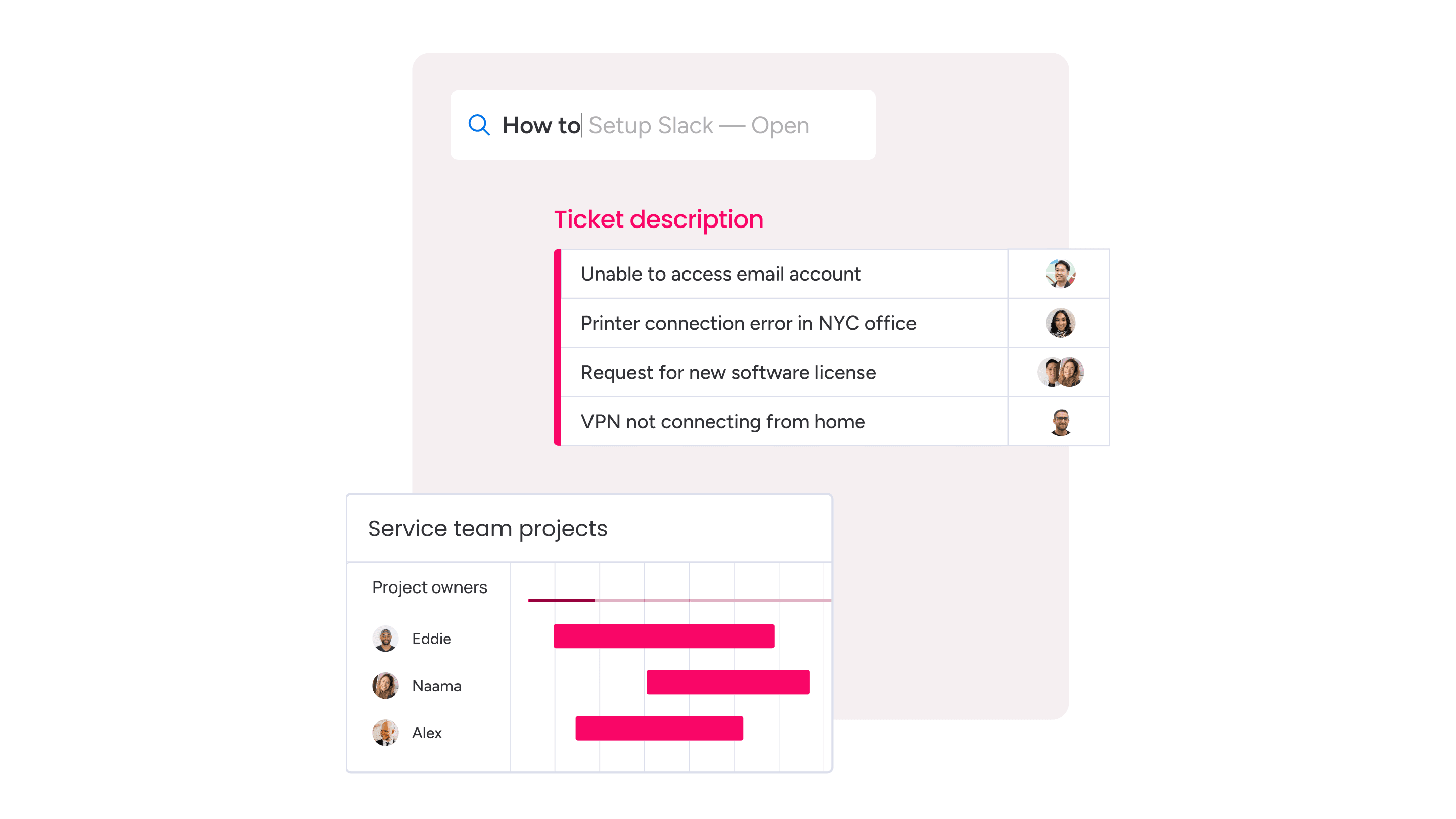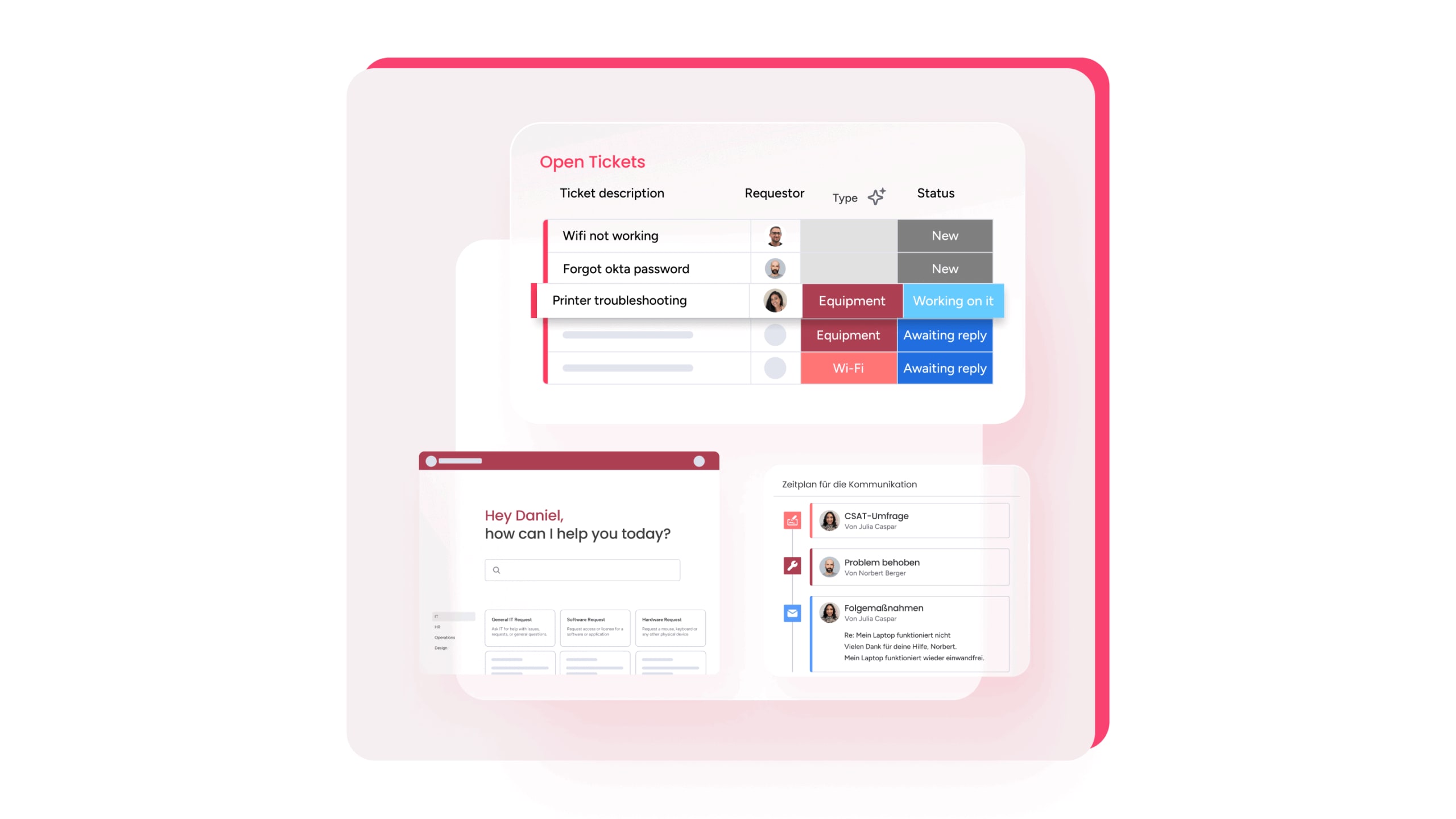Delivering new features should feel like a victory, not a risk. Yet for many teams, the final step of deploying changes is where things go wrong, leading to service disruptions and emergency fixes. This tension between moving fast and maintaining stability is a common challenge, but it is not a necessary one.
The solution is a structured process that coordinates every step of a release. Effective ITIL release management acts as a playbook for your deployments, ensuring that every change is planned, tested, and rolled out smoothly. It transforms the release process from a source of anxiety into a predictable, controlled function that supports the business.
This handy guide explores the fundamentals of a strong IT release management practice. We will cover the six essential steps of the release lifecycle, define the key roles and responsibilities, and share best practices for automation and collaboration.
You will also learn how to measure success and align your process with modern DevOps workflows, seeing how a centralized platform can bring these practices to life.
Key takeaways
- Preventing disruptions: ITIL release management prevents service disruptions by coordinating deployments like air traffic control, ensuring changes move safely from development to production without breaking existing systems.
- The 6-step process: follow the 6-step ITIL process: plan releases, build packages, test thoroughly, deploy carefully, monitor early performance, and review outcomes to improve future deployments.
- Centralized coordination: modern platforms, such as monday service, transform release management with centralized planning, AI-powered automations, and real-time visibility that connects development, operations, and business teams seamlessly.
- Measuring success: track success with key metrics like release success rate (aim for 90%+), deployment speed, and service availability to identify bottlenecks and prove business value.
- DevOps alignment: modern ITIL works perfectly with DevOps and agile methods by automating approvals and documentation while maintaining necessary governance and audit trails.
What is ITIL release management?
ITIL release management is the practice of planning, scheduling, and controlling how releases move from development to live environments. It ensures your new services and updates deploy successfully, preventing disruptions and avoiding costly rework, which, according to analysis by SayoneTech, can be 100–150 times more expensive than fixing issues during development.
Release management functions like air traffic control for IT changes. Just as controllers coordinate planes to prevent collisions, the practice coordinates deployments to prevent service disruptions.
Release management in ITIL: terminology explained
ITIL 4 transformed release management from rigid, waterfall processes into something that actually works with modern development. On a platform like monday service, you can use Agile sprints and DevOps automation while still maintaining control and compliance.
The essential release terminology includes:
- Release: a group of changes that deploy together.
- Release unit: the smallest piece of infrastructure you can release independently.
- Release package: all the components that must deploy as one unit.
Key benefits of structured release management
Why should your organization care about formal release management? The business impact goes far beyond IT operations management.
You’ll see fewer outages because changes are tested and coordinated properly. Your teams can deliver new features faster since they’re not constantly fixing broken deployments. Quality improves naturally when every release follows proven ITSM processes.
The financial benefits are equally compelling:
- Reduced emergency fixes: frees up resources from costly, unplanned work.
- Lower rollback costs: fewer failed deployments mean less rework.
- Compliance confidence: complete audit trails for every change.

The 6-step ITIL release management process
Every successful release follows these 6 steps. Modern platforms help you track each phase automatically, so nothing falls through the cracks in service management.
Step 1: release planning and scheduling
Start by mapping out what needs to deploy and when. You’ll coordinate with business calendars to avoid critical periods and align resources across teams.
Good planning answers 3 questions: What are we releasing? When can we deploy without disrupting business? Who needs to be involved?
Step 2: release building and packaging
Now you assemble all the components into a deployable package. This means pulling code from repositories, updating configuration files, and verifying all dependencies are included.
Version control becomes critical here; you need to know exactly what’s in each release package.
Step 3: release testing and validation
Testing isn’t optional. You’ll run through multiple validation phases to catch issues before they hit production.
Your testing should cover:
- Unit tests: does each component work individually?
- Integration tests: do components work together?
- User acceptance: does it meet business requirements?
- Performance tests: can it handle production loads?
Step 4: release deployment and distribution
This is where planning meets reality. You’ll execute your deployment strategy while monitoring for any issues.
Modern deployment approaches minimize risk through gradual rollouts. Blue-green deployments let you switch between old and new versions instantly. Canary releases test changes on a small user group first.
Step 5: early life support
Vigilance is key after deployment: the first few days are critical for monitoring. You’ll monitor performance closely and respond quickly to any issues.
This phase includes watching system metrics, gathering user feedback, and keeping IT help desk support teams on standby for rapid response.
Step 6: release review and continuous improvement
Time to ask: What worked and what didn’t? You’ll analyze each release to find ways to improve future deployments.
Document lessons learned while they’re fresh. Track metrics like deployment time and issue counts. Use this data to refine your asset lifecycle management processes continuously.
Release management vs deployment management
These two terms often get mixed together because both deal with getting changes into production. But they play very different roles in the delivery flow. One focuses on the bigger picture — planning, coordination, and timing — while the other focuses on the technical steps that actually move code into a live environment.
Seeing how they work side by side makes it much easier to design a process that’s smooth, predictable, and easy for teams to follow.
| Aspect | Release Management | Deployment management |
|---|---|---|
| Focus | End-to-end coordination | Technical execution |
| Timeline | Weeks to months | Hours to days |
| Scope | Business and technical planning | Installation and configuration |
| Teams involved | Everyone from business to IT | Technical teams only |

Essential roles in ITIL release management
Clear roles prevent confusion and ensure accountability. Here’s who does what in a well-run release process.
Release manager responsibilities
The release manager owns the big picture. They coordinate between teams, manage timelines, and ensure releases align with business goals.
Their key responsibilities include:
- Strategic planning: creating release schedules that support business objectives.
- Risk management: identifying what could go wrong and planning accordingly.
- Stakeholder communication: keeping everyone informed throughout the process.
- Process improvement: refining release procedures based on outcomes.
Release coordinator functions
While the release manager thinks strategically, the coordinator handles daily operations. They track progress, schedule meetings, and ensure documentation stays current.
This role keeps the trains running on time by managing calendars, chasing approvals, and coordinating handoffs between teams.
CAB and stakeholder involvement
The Change Advisory Board (CAB) evaluates release risks and gives final approval. They bring together perspectives from security, operations, and business teams.
Other stakeholders contribute specialized knowledge. Database administrators review schema changes. Security teams assess vulnerabilities. Business owners confirm timing works for their operations.
8 ITIL release management best practices
Want to accelerate your release management maturity? These practices address the most common challenges teams face.
1. Automate your release pipeline
Manual processes slow you down and introduce errors. Automation handles repetitive tasks consistently every time.
Connect your CI/CD pipeline to automatically build, test, and deploy approved changes. Solutions like monday service integrate with your existing automation platforms to track progress without manual updates.
2. Establish clear communication protocols
Everyone needs to know what’s happening and when. Create standard templates for release notifications and status updates.
Define who gets notified at each stage and how escalations work when issues arise.
3. Create comprehensive release documentation
Good documentation saves time and prevents mistakes. In fact, research from Octopus Deploy shows that teams with high-quality documentation are more than twice as likely to meet or exceed their targets. Your release notes should explain what’s changing and why it matters to users.
4. Implement risk-based release strategies
Not all releases carry the same risk. A minor bug fix needs less scrutiny than a major infrastructure change.
Assess each release’s potential impact and choose your deployment strategy accordingly. High-risk changes might need phased rollouts, while low-risk updates can deploy directly.
5. Enable continuous feedback loops
How do you know if your releases are successful? Collect feedback from users, monitoring systems, and support teams.
Use this input to identify patterns and improve your processes. Are certain types of changes more likely to fail? Do releases at specific times have more issues?
6. Integrate with CI/CD workflows
Modern development moves fast. Your release management needs to keep pace without sacrificing control.
Build approval gates into your CI/CD pipeline. Automate documentation generation. Let developers see release status without leaving their normal workflows.
7. Standardize release templates
Starting from scratch wastes time. Create templates for common release types that include all necessary steps and checkpoints.
Your templates should cover planning documents, testing checklists, and communication plans. Teams can customize as needed while ensuring nothing gets missed.
8. Build cross-functional collaboration
Finally, keep in mind that silos kill releases. Development throws code over the wall to operations. Operations discovers problems too late to fix easily.
Break down these barriers by including all teams in planning. Use shared workspaces where everyone can see progress and contribute insights.

"Our team LOVES the monday service platform and we’re already exploring how we could incorporate it for other departments, too. It has streamlined our workflow in a way that both our team and customers appreciate."
Andrew Marshall | VP Operations
״monday service provides clear insights into requests volume and types, response times, and trends - helping us continuously improve operations"
Grant De Waal-Dubla | CIO"The biggest value for us is speed and flexibility. You can get up and running in days, change anything instantly, and see everything in real time. And you don’t need a dedicated admin to do it."
Clive Camilleri | Head of People Tech & OperationsIntegrating release and change management
Release management and change management are partners, not competitors. Changes define what needs to happen and releases make it happen.
Every release starts with approved changes. Your change management process evaluates business impact and technical risk. Once approved, release management takes over to coordinate deployment.
The relationship flows both ways. Release outcomes inform future change decisions. If certain change types consistently cause problems, you’ll adjust your approval criteria.
Modern platforms like monday service connect these processes seamlessly. Change requests link directly to release plans, providing complete visibility from initial request through successful deployment.
Critical release management KPIs to track
What gets measured gets managed. Tracking these key metrics within a centralized dashboard on a platform like monday service is essential for demonstrating that your release management practice is actually improving and delivering measurable business value.
- Release success rate: this is your most fundamental metric—the percentage of releases that deploy successfully without rollbacks or emergency fixes. Calculate it as successful releases divided by total releases; rates below 90% often signal process problems.
- Mean time to deploy (MTTD): measures the time taken from release approval to production deployment. Tracking this metric helps identify process bottlenecks (e.g., slow approvals, testing constraints) and demonstrates quicker value delivery to customers.
- Release frequency: shows how often you can deliver changes to production. Higher frequency typically indicates mature, efficient processes, but must be balanced with the release success rate.
- Rollback and failure rates: tracks how often failed releases necessitate a rollback. High rates indicate inadequate testing or planning, requiring analysis to pinpoint root causes like missing test cases or specific change types prone to failure. A dedicated IT ticketing system can help track and analyze these issues quickly.
- Service availability metrics: the ultimate measure of reliability. Track availability before, during, and after releases. Improved availability post-release demonstrates value, while drops during deployment indicate a need for smoother processes.

Modern release management platforms and automation
New tools have changed how teams plan, deploy, and monitor releases. Instead of relying on manual steps and scattered communication, automation brings consistency and speed to every stage.
These capabilities help teams ship updates with more confidence and far fewer surprises.
AI-powered release orchestration
AI analyzes your release history to predict risks and optimize scheduling, a core benefit of AI service management. It spots patterns humans might miss.
Machine learning improves recommendations over time. The more releases you run, the smarter the system becomes at preventing problems.
Automated testing and validation
Quality gates run automatically at each stage. Unit tests execute on code commit. Integration tests run before deployment approval.
This automation provides consistent, comprehensive testing coverage without slowing down delivery.
Real-time monitoring solutions
You can’t fix what you can’t see. Modern platforms provide instant visibility into deployment progress and system health.
Automated alerts notify teams immediately when issues arise. Performance metrics show the impact of changes as they happen.
Configuration management platforms
Tracking what’s deployed where used to require spreadsheets and guesswork. Configuration management platforms maintain accurate records automatically.
They prevent configuration drift and ensure test environments match production through IT inventory management. You’ll always know exactly what version is running where.
Aligning ITIL release management with DevOps
Wondering how ITIL and DevOps can work together? Modern release management combines ITIL’s governance with DevOps speed.
You can handily maintain necessary controls through automated approval workflows. Documentation generates automatically from your deployment pipeline. Risk assessments happen in minutes, not days.
The key is focusing on outcomes rather than rigid processes. Does the release deploy safely? Are stakeholders informed? Is there an audit trail? If yes, you’ve achieved ITIL goals through DevOps means.
Intuitive solutions like monday service bridges both worlds perfectly: you get the flexibility to evolve processes while maintaining the visibility and control ITIL requires.

Transform your release management with monday service
Ready to modernize your release management? The intuitive platform that brings everything together is monday service.
You’ll coordinate releases across departments with streamlined, centralized communication. Automated workflows handle approvals and notifications while you focus on strategic decisions. Real-time dashboards show exactly where each release stands.
The platform adapts to your needs:
- Centralized planning: see all releases and dependencies in one place.
- Smart automation: let AI handle routine processes and risk assessments.
- Complete visibility: track progress across teams instantly.
- Seamless collaboration: connect development, operations, and business stakeholders.
Start with basic workflows and expand as you mature. Support for everything from simple deployments to complex, multi-team releases is provided by the monday service platform.
Frequently asked questions
What is the difference between ITIL v3 and ITIL 4 release management?
The main difference between ITIL v3 and ITIL 4 release management is that ITIL 4 embraces modern practices like continuous delivery and DevOps, while ITIL v3 followed more rigid, sequential processes. The newer version focuses on value streams and outcomes rather than strict procedural steps.
How do emergency releases work within ITIL frameworks?
Emergency releases bypass normal scheduling but still maintain essential controls. They follow expedited approval paths with streamlined documentation while ensuring risk assessment and rollback procedures remain in place.
Can ITIL release management integrate with agile development methodologies?
Yes, ITIL release management works well with agile by supporting frequent, smaller releases. The key is implementing lightweight governance that provides oversight without slowing sprint velocity or continuous delivery.
What certifications help advance release management careers?
ITIL 4 Foundation certification provides essential knowledge for release management roles. ITIL 4 Managing Professional adds advanced skills, while DevOps and project management certifications complement ITIL training.
How quickly can organizations implement structured release management?
Organizations can establish basic release management processes within three to six months. Mature practices with optimized workflows and automation typically develop over 12–18 months of continuous refinement.
What is the relationship between release management and service transition?
Release management is a core practice within ITIL's service transition stage. It specifically handles the deployment and early life support of new or changed services while working alongside other transition practices.
 Get started
Get started 

